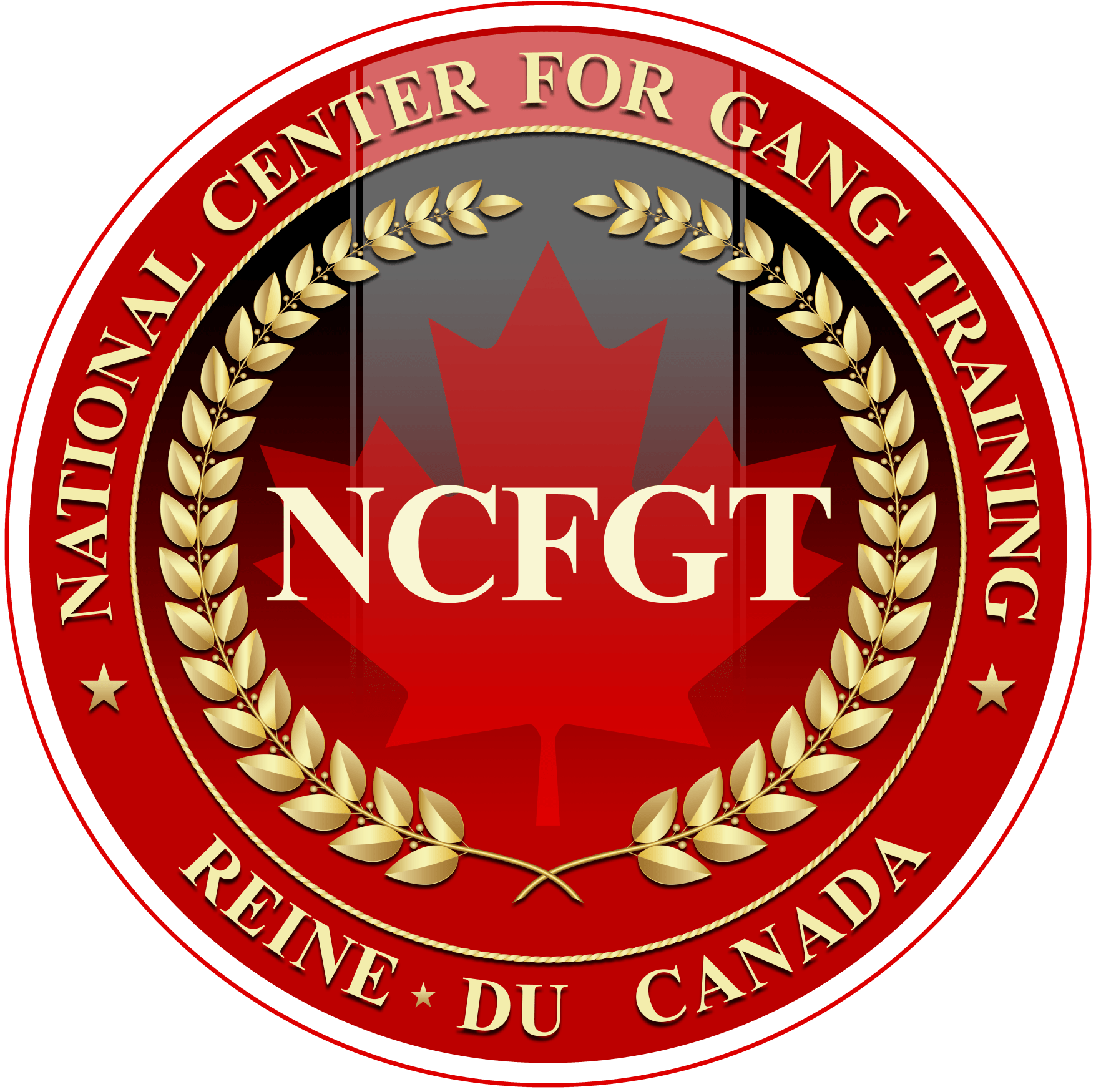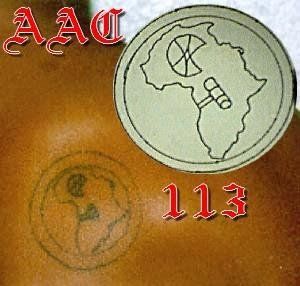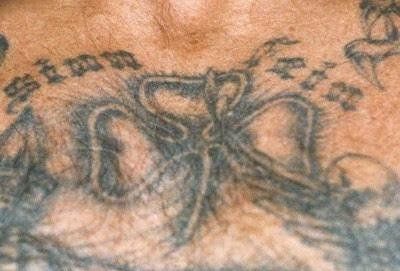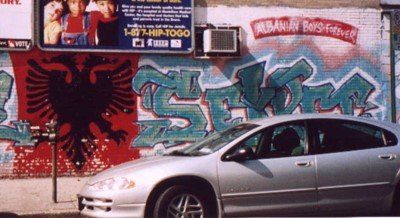GANG ARTICLES - NCFGT ARCHIVE
Black Gangs
415 Kumi Nation was formed in the mid 80's by members of the Black Guerrilla Family (BGF) at San Quentin State Prison. Prior to the creation of KUMI or K.A.N.O. (KUMI AFRICAN NATION ORGANIZATION), the founding members became unsatisfied with the BGF leadership, so they broke away from BGF and formed 415 Kumi Nation , which is the area code for parts of California's Bay Area. They began using the Swahili word "KUMI" (Koo-me) meaning "10" (the sum of 415 is 10.) Since the creation of KUMI, they have grown in numbers. There are documented KUMI members in every Prison within California. 415 Kumi Nation only recruited black inmates from California's Bay Area, but now recruits from Black gangs all over California. The 415 Kumi and BGF have had numerous conflicts but have also worked together depending on the prison environment. 415 KUMI members have recently provided recruitment pools for the BGF. In the Monterey County Jail, brief alliances have been reported among the Bloods, Crips, and 415 Kumi Nation during period leading up to Stanley Tookie Williams' execution. The gang has been reported to use prison guards to authorize violence against fellow inmates, such as the case in August of 2003 when former correctional officer Leon Holston was charged with aiding and abetting, battery with serious bodily injury, filing a false report by a peace officer and unlawful communication with a prisoner (Associated Press Newswires 9 Sep 2004). They have been reported in: * Salinas Valley State Prison * Folsom State Prison * Monterey County Jail * Pleasant Valley State Prison in Coalinga * selected areas across East County, California.
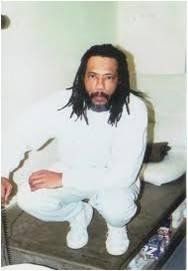
S outh Side of Chicago 1960’s F orm by David Barksdale (Black Disciples) and Larry Hoover C hanged to “Growth and Development” in efforts to legitimize their group M ost sets outside Chicago still call themselves BGD B rothers of the Strong Struggle (BOSS) F ound in all 50 states and the Military including bases in Iraq and Afghanistan S ymbol: Star of David (Six pointed star) C olors: Black and Blue D uke Blue Devils S ymbol: Pair of pitchforks T heir leader is known as the “Chairman of the Board”
Hispanic Gangs
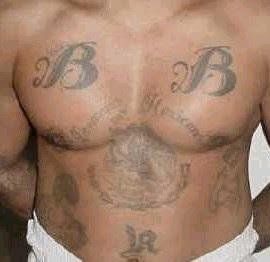
The Border Brothers gang was founded in 1989 by Sergio Gonzalez-Martinez and others in Tijuana, Mexico. The Mexican gang spread into California in 1990 and began recruiting criminal illegal immigrants in barrios across San Diego, Los Angeles, Fresno and Oakland. The gang made bitter enemies with the Mara Salvatrucha, and other northern California street gangs. In 1994, members began recruiting inside of state and federal prisons.
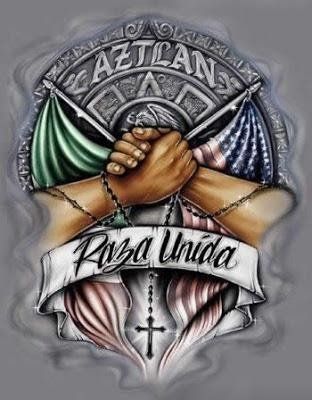
The Raza Unida (RU) is a Latino prison gang that originated in 1988 in the southern Texas prison system. The founders of the gang were convicted felons from Corpus Christi and Dallas, Texas. NOTE: This gang should not be confused with La Raza Unida Hispanic rights activist group. Soon after the gang's inception, a conflict arose between the RUs and another prison gang called the Barrio Azteca. The Azteca’s murdered an RU member, claiming that the victim had once been a member of the Barrio Azteca. The claim turned out to be legitimate, so the Raza Unida did not retaliate. Following the Raza Unida’s primary years, the gang struggled to gain the respect from “The Big 3” – the Mexican Mafia, the Texas Syndicate, and the Barrio Azteca, the states larger and more established prison gangs. In 1992 the Mexikanemi instigated a brief war with the weaker Raza Unida. Three members of the Raza Unida were killed in an attack from the Mexican Mafia at the Coffield state prison. During the conflict with the Raza Unida and the more powerful Mexican Mafia, the Raza Unida had no choice but to join alliance with the Texas Syndicate. This meant that they gave the Texas Syndicate a quarter of Corpus Christi, which was officially Raza Unida drug-dealing territory. As a result, the Texas Syndicate protected the Raza Unida. In 1994, the TS and the RUs wanted to take over the Brownsville, Texas drug route, which was being run by a rival prison gang, the HPL (Hermanos Pistoleros Latinos). After five years of war, they reached an agreement that all three gangs would share the drug trade in Brownsville by dividing the city into sections. The Raza Unida began to multiply in 1995 after a murderous war erupted between the TS and the Barrio Azteca. The Raza Unida refused to get involved in this war or assist the Texas Syndicate. Instead the Raza Unida severed its alliance with the Texas Syndicate and declared complete independence. These infuriated members of the Texas Syndicate but the TS could not afford to retaliate against the RUs. While the Texas Syndicate was being consumed in warfare against their rival Barrio Azteca gang, the now independent Raza Unida was able to gain control of the prison drug trade. Unfortunately, the Raza Unida’s newfound power did not last long. In July 1997, the Texas Syndicate regained power and control of the prison system drug trade. During these war years, it became known to the Texas Syndicate that the RUs were importing drugs from the Brownsville, TX and Matamoros, MX international port of entry and trafficking them to Dallas and Houston, which was predominantly Texas Syndicate territory. In late March 2002, RU members assault and kill a TS member at the Polunsky Unit, and lockdowns are ordered for all known or suspected TS and RU members and affiliates. A full scale gang war erupted between both gangs and violence erupted in units statewide as well as in cities such as Corpus Christi, San Antonio, Dallas and Houston. The Raza Unida suffered great losses and was on the verge of collapse when a conflict arose among ranking members of the Raza Unida. The RU’s Dallas and southern Texas members split into two factions after the two could not reach an agreement or a truce. The majority faction is called RU Sureños, which make up members of the southern part of Texas, and the minority faction from Dallas which remains Raza Unida. The split caused a loss of morale for many of the organization’s original members, and several hundreds quit. Symbols: RU, Eagle with both Mexican and American flags Territory: Corpus Christi, Houston, Dallas and small chapters across the United States. Alliances: none Members: 700 Ethnicity: Hispanic

The Texas Chicano Brotherhood was founded by Gilberto Villarreal (and others) in Hidalgo County, after they split from the Tri-City Bombers in 1994. The gang’s founders adopted the same blood in blood out regulation as established prison gangs and attempted to persuade members of the Tri-City Bombers to "flip" and join the Texas Chicano Brotherhood. The Texas Syndicate, and Mexikanemi, wouldn't allow the Texas Chicano Brotherhood to recruit within the Texas prison system, so they merged with street gangs from south Texas.
White Supremacists
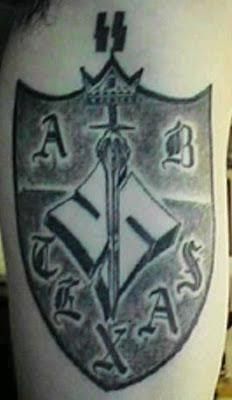
The ABT was founded in the early 1980s when a group of white Texas inmates petitioned the California Aryan Brotherhood for permission to establish a chapter in Texas. Although the California Aryan Brotherhood refused the request, the Texas inmates still formed the ABT. Since its founding, the ABT has made several attempts to change its name or hide behind the umbrella of a religious organization, such as the Aryan Reich or the Church of Aryan Christian Heritage. Although the gang experienced severe internal problems and a high dropout rate shortly after these unsuccessful attempts, ABT still remains a formidable group in and out of the Texas prison system.
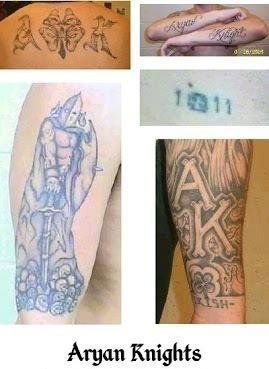
T he Aryan Knights was created at Idaho Maximum Security Institution (Idaho Department of Correction) in the 1990s. Members are required to believe in some form of Christianity. They exhibit the standard Aryan symbols in various manners to denote their support of white supremacy ideology. In addition to these symbols, their tattoos usually display the initials "AK," the phrase "Aryan Knight," or the numbers "1 11" to indicate set affiliation. The numbers "1 11" are representative of the Aryan Knights, because "A" is the first letter of the alphabet and "K" is the eleventh letter of the alphabet.
Mafia
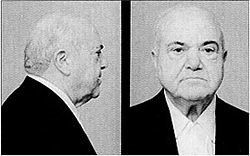
116th Street Crew The 116th Street crew, also known as the Uptown crew, is a powerful crew within the Genovese crime family. In the early 1960s, Anthony Salerno became one of the most powerful capos in the family. Salerno based the crew out of the Palma Boys Social Club located 416 East 115th Street in East Harlem, Manhattan. History The 116th Street Mob In the early 1890s, a group of five brothers (Antonio, Nicholas, Giuseppe and half-brothers Vincenzo and Ciro Terranova) arrived in New York City from Corleone, Sicily. The Morello-Terranova brothers soon started taking over the growing Little Italy in East Harlem, by using the Black Hand technique of extorting small business and running illegal gambling operations. The group became known as the 116th Street Mob (or Morello gang ), with their increasing power the Morello's sought to control the Lower Manhattan's Little Italy. The Little Italy in lower Manhattan was under the control of Ignazio "Lupo the Wolf" Saietta, before a gang war reputed the two sides decided on joining forcing. Giuseppe Morello became the Capo di tutti capi (or boss of bosses ), but before long he and Ignazio Saietta were arrested and charged with counterfeiting in 1910. Nicholas "Nick Morello" Terranova took over the 116th Street Mob , and became in boiled in the Mafia-Camorra War. The War was between the Sicilian Morello-Terranova family and Brooklyn Camorra gangs led by Pellegrino Morano. Each side wanted to completely control all the Italian gangs in New York City and across the United States. On September 7, 1916 Nicholas Terranova was murdered, giving the Camorra gangs the advantage. The next leaders of the Morello family were brothers Vincenzo and Ciro Terranova. They continued the war and within month's police began arresting top members of the Camorra gangs. This allowed the Sicilian to maintain dominance and control over New York City and the remaining Camorra gangs joined forces with Sicilian gangs. Vincent continued operating from Brooklyn and Ciro continued expanding his operations in East Harlem and The Bronx. The Artichoke King Ciro "The Artichoke King" Terranova controlled the 116th Street Crew during the prohibition era. Coppola's policy racket Michael "Trigger Mike" Coppola, was a top lieutenant in the 116th Street crew of Ciro Terranova. He took over the crew sometime between 1932 and 1936, Terranova was being "put on the shelf" (meaning forced into retirement) by the new Luciano-Genovese-Costello regime of the Luciano crime family. Coppola was also supervising the illegal number racket that was once controlled by Dutch Schultz before his murder. The number racket controlled bookmaking and illegal gambling throughout Harlem and South Bronx making thousands of dollars a year. When boss Vito Genovese was imprisoned in the late 1950s, various influential members began running the crime family through a ruling panel/committee . The panel consisted of acting/front boss Thomas "Tommy Ryan" Eboli, underboss Gerardo "Gerry" Catena and consigliere Michele "Big Mike" Miranda while others served in the advisory capacity, Mike Coppola was considered an influential capo and was used to help the panel. In the early 1960s Mike Coppola was imprisoned on tax evasion charges and followed in the footsteps of his predecessor Ciro Terranova, being put on the shelf after his release from prison in 1963. Coppola later moved to South Florida and effectively retired. His crew, with his vast illegal interests went to Anthony Salerno. Palma Boys crew
Albanian mafia The Albanian Mafia or Albanian Organized Crime are the general terms used for criminal organizations based in Albania or composed of ethnic Albanians . Albanian organized crime is active in Albania , the United States , and the European Union (EU) countries, participating in a diverse range of criminal enterprises including drug and arms trafficking . In Albania alone there are over 15 mafia families or clans that control organized crime. Structure The typical structure of the Albanian Mafia is hierarchical. Concerning "loyalty", "honor" and family (blood relations and marriage being very important) most of the Albanian networks seem to be "old-fashioned". Infiltration into these groups is thus very difficult. Albanian Mafia families or clans are usually made up of groups of fewer than 100 members, constituting an extended family residing all along the Balkan route from Eastern Turkey, to Western Europe, and North America. The Northern Albanian Mafia which runs the drug wholesale business is also known by the name of "The Fifteen Families." According to Ioannis Michaletos, the family structure is characterized by a strong inner discipline, which is achieved by a means of punishment for every deviation from the internal rules, so that the fear should guarantee an unconditional loyalty to the family, with the provisions of the official laws considered to be secondary, not important and non-binding. Due to the fact that the Mafia families are based on the blood ties, which is a factor that restricts the number of the clan members, the bonds between them are very strong, which makes getting close to and infiltrating into them almost impossible. Members of other ethnic groups can be accepted only to execute certain one time or secondary jobs. Moreover, the Albanian mafia families are organized in 3-4 or more levels, which enable them to preserve the organizational action capability even in case some of its members or groups are captured. Rudaj Organization The most famous Albanian criminal organization was the Rudaj Organization . In October 2004, the FBI arrested 22 men who worked for it. This included its leader Alex Rudaj , and effectively ended the criminal organization. They had entered in the territory of Lucchese crime family in Astoria, Queens , New York, and are said to have even beaten up two made men in the Lucchese family. The name Rudaj comes from the boss of the organization. According to The New York Times published on January 2006, "Beginning in the 1990s, the Corporation, led by a man named Alex Rudaj, established ties with established organized crime figures including members of the Gambino crime family , the authorities say. Then, through negotiations or in armed showdowns, the Albanians struck out on their own, daring to battle the Lucchese and Gambino families for territory in Queens, the Bronx and Westchester County, prosecutors say." "What we have here might be considered a sixth crime family," after the five Mafia organizations — Bonanno, Colombo, Gambino, Genovese and Lucchese — said Fred Snelling, head of the FBI's criminal division in New York. International activity Scandinavia "The ethnic Albanian mafia is very powerful and extremely violent," said Kim Kliver, chief investigator for organized crime with the Danish National Police. Law enforcement authorities estimate that different Albanian mafia families may smuggle as much as 440 pounds of heroin a year into Scandinavia at any given time. United States "On the streets where the Italian Mob once ruled, a new syndicate was taking over, run by tough, ambitious Albanian immigrants, who still clump to a code of silence." - “We’re still trying to learn about their culture and figure out what makes them tick,” James Farley, FBI supervisory special agent, and expert on organized crime, says of the Albanians. “They’re difficult to infiltrate.” “We’re just now catching up with Albanian organized crime,” he says. While Italian gangsters may be three or four generations removed from the old country, the Albanians grew up under brutal communist regimes, engaging in protracted blood feuds with rival clans, and subscribing to a strict code of silence that makes the Italian credo of omertà seem playful. “The first generation Albanians have a tendency to be more violent” than American-born syndicates, claims Hall. In the United States, Albanian gangs started to be active in the mid-80s, mostly participating in low-level crimes such as burglaries and robberies. Later, they would become affiliated with Cosa Nostra crime families before eventually growing strong enough to operate their own organizations under the Iliazi family name. Albanian organized crime has created new and unique problems for law-enforcement officers around the country, even threatening to displace La Cosa Nostra (LCN) families as kingpins of U.S. crime, according to FBI officials. Speaking anonymously for Philadelphia's City Paper a member of the " Kielbasa Posse ", an ethnic Polish mob group, declared in 2002 that Poles are willing to do business with "just about anybody. Dominicans. Blacks. Italians. Asian street gangs. Russians. But they won't go near the Albanian mob. The Albanians are too violent and too unpredictable." The Polish mob has told its associates that the Albanians are like the early Sicilian Mafia — clannish, secretive, hypersensitive to any kind of insult, and too quick to use violence for the sake of vengeance. The Rudaj Organization , also called "The Corporation", was a well known Albanian criminal organization operating in the New York City metro area. Italy Albanian emigrants started arriving at Italian ports in 1991. By 1997 the immigration had come under the control of Albanian and Italian criminal groups, tightening relationships between them The Albanians are targeting affluent central and northern areas like Lombardy , Piedmont , and Tuscany . One of Italy's top prosecutors, Cataldo Motta , who has identified Albania's most dangerous mobsters, says they are a threat to Western society. "The road for arms and people, meaning illegal immigrants destined for Europe, is in Albanian hands." "The Albanian Mafia seems to have established good working relationships with the Italian Mafia". "On the 27th of July 1999 police in Durres (Albania), with Italian assistance arrested one of the godfathers of the "Sacra Corona Unita", Puglia’s Italian Mafia. This Albanian link seems to confirm that the Sacra Corona Unita and the Albanian Mafia are "partners" in Puglia/Italy and delegate several criminal activities". Thus, in many areas of Italy, the market for cannabis, prostitution, and smuggling is run mainly by Albanians. Links to Calabria’s Mafia, the "Ndrangheta", exist in Northern Italy. Several key figures of the Albanian Mafia seem to reside frequently in the Calabrian towns of Perugia, Africo, Plati, and Bovalino (Italy), fiefs of the Ndrangheta. Southern Albanian groups also have good relationships with Sicily’s Cosa Nostra "The Albanian criminals were special from the beginning," said Francesca Marcelli, an organized-crime investigator for the Italian government. They have strong motivations and are very violent." Roberto Saviano, The Italian writer, a good expert of Neapolitan Camorra and the Italian mafia in general, spoke of the Albanian mafia as a “no longer foreign mafia” to Italy and stressed that the Albanians and Italians have a "brotherly" relationship between each other. Saviano notes that the Camorra from Naples can't understand the Russian clans , which aren't based on family ties, and feels greater affinity with the Albanian crime families. In an Albanian television station ""ShqipTV" Saviano went on to say that the Albanian and Italian factions are "one of the same", and that they don’t consider each other as foreigners. United Kingdom Albanian mafia gangs are believed to be largely behind sex trafficking, immigrants smuggling, as well as working with Turkish gangs in Southend-On-Sea, who control the heroin trade in the United Kingdom . Vice squad officers estimate that "Albanians now control more than 75 per cent of the country’s brothels and their operations in London’s Soho alone are worth more than £15 million a year." They are said to be present in every big city in Britain as well as many smaller ones including Telford and Lancaster , after having fought off rival criminals in turf wars. Albanian gangsters were also involved in the largest cash robbery in British crime history, the £53 million (about US$92.5 million at the time of the robbery) Securitas heist in 2006. Germany "Ethnic Albanians" (as the German police officially calls them), no matter where they come from — Albania, Republic of Macedonia, or Kosovo — created for a very short time in the last decade of the century, a very powerful criminal network, says Manfred Quedzuweit, director of the Police Department for Fighting the Organized Crime in Hamburg. Here, it could be heard that they are even more dangerous than Cosa Nostra . Albanian "banks" in Germany are a special story. They are used for the transfer of money from Germany which amounts to a billion of D-marks a year. One of these banks was discovered by accident by the Düsseldorf police when they were checking a travel agency "Eulinda" owned by the Albanians. We haven't found a single catalogue or brochure for travelling at the agency, computers were not operating, nor has the printer been ever used. We found that "Eulinda" was a cover-up for some other business, said high criminal counselor from Düsseldorf Rainer Bruckert. Eventually we found out that "Eulinda" had already transferred 150 million dollars to Kosovo — for "humanitarian purposes", says Bruckert. Money has been transferred by the couriers in special waist belts with many pockets. So, in a single one-way trip, they can carry up to six million D-marks. Belgium The Albanian mafia has deep roots in Belgium, which was recently a topic of a special programme on Belgian RTBF Channel One. Reporters tried to investigate the roots of Albanian organized crime but have complained that it is too hard to penetrate the structure and organization of the Albanian mafia, but set out that the Albanian mafia acts on the model of the Italian one, whose crime is part of the "activities of entire families" and which has a clearly defined hierarchy. The Albanian mafia in Brussels has monopoly over activities such as "narcotics and arms deals" according to Belgian sources. Australia Godfather of an Albanian Mafia family 'Daut Kadriovski' gained attention of Australian Authorities after creating a drug pipeline through Albanian and Croatian communities in Sydney and Brisbane. Prominent Albanian Mafioso Alex Rudaj : The boss of the Albanian Mafia's Rudaj Organization based in the New York City area. Alfred Shkurti (also known as Aldo Bare): The boss of one of the most notorious criminal syndicates in Albania known as the “Banda e Lushnjës” (The Lushnja Gang). Enver Sekiraqa : Leading person of organized crime in Kosovo, aka “the boss of the bosses”, who is on the Interpol’s wanted list for several crimes. Ismail Lika : Ismail Lika was an Albanian mobster active in New York City in the 1980s. Dubbed the king of the New York drug underworld, Ismail Lika issued a contract on Rudy Giuliani 's prosecutors in 1985. Caught with at least $125 million in heroin, Lika issued a $400,000 contract on the prosecutor Alan Cohen and the detective Jack Delemore, both placed under protective custody. Lulzim Krasniqi :(1863-2006) Former leader of the Albania Mafia based in Zagreb, Croatia. Almir Rrapo : Leader of the "Krasniqi Crew" based in New York and other US cities. Daut Kadriovski : The reputed boss of one of the 15 Families, embodies the tenacity of the top Albanian drug traffickers. Zef Mustafa : Albanian Mafia kingpin based out of New York. Agim Gashi : Leader of an Albanian Mafia clan based out of Italy. Osmani Brothers : According to the German Federal Intelligence Service (BND) the Osmani brothers as the "most important figures of organized crime in Hamburg and other cities in Germany" Adriatik Coli : Leader of one of the most powerful "15 families" known as " Banda e Lul Berishës" based in Durrës , Albania . Krasniqi Brothers : Bruno Krasniqi and Saimir Krasniqi; leaders of an international crime organization engaged in murder, kidnapping, narcotics trafficking and other illegal activities in Albania and the U.S. Myfit (Mike) Dika : Former drug kingpin of the “Balkan Criminal Enterprises”; an international criminal organization which spanned from Canada , the United States , to Europe . Kapllan Murat : Belgium's most notorious mobster. He was one of the masterminds behind the kidnapping of former Belgian Prime Minister Paul Vanden Boeynants in 1989. Three days later, the criminals published a note in the leading Brussels newspaper Le Soir , demanding 30 million Belgian francs in ransom. Paul Vanden Boeynants was released (physically unharmed) a month later, on 13 February, when an undisclosed ransom was paid to the perpetrators. Plaurent "Lenti" Dervisha : On the Interpol's and FBI's most wanted list as being the leading member of a criminal organization based out of Durrës , Albania , who Albanian authorities say is the brother-in-law of Lul Berisha ;a reputed leader of one of the 15 mafia families. In popular culture In films An Albanian criminal organization in Paris is responsible for the kidnapping of Liam Neeson 's character's daughter in Taken . Le Chiffre is the main villain of the 2006 James Bond film, Casino Royale , portrayed by Danish actor Mads Mikkelsen . Believed by MI6 to be Albanian, Le Chiffre is banker to the world's terrorist organizations. In the French movie The Nest the plot centers around an Albanian mob boss in police custody being escorted to The Hague. Albanian mobsters Rexho and Luan feature in the Danish crime film Pusher III . Dossier K , a Belgian crime thriller, portrays the Albanian mafia in Belgium . In " We Own the Night "; A final drug transaction is made with the Albanian Mafia. In the movie " In With Thieves " A blood diamond deal goes wrong which throws Albanian Mafioso into chaos in the criminal underworld. In Television In the " Law and Order: Criminal Intent " episode "Blasters" (Season 6, Episode 9) two former childstars involved in bootlegging ring are being hunted down by the Albanian mob. The story arc "The Slavers" of the adult-oriented Marvel comic The Punisher: Frank Castle deals with Albanian criminals engaged in human trafficking. In the American TV show " No Ordinary Family " episode "No-Ordinary Mobster" deals with the main character attempting to stop violent Albanian Mobsters. Top Gear , a British car show, featured an episode (comedy) in which they tested three luxury automakers; Rolls-Royce Ghost , Mercedes-Benz S-Class , and Bentley Mulsanne , to see which would be best suitable for Albanian Mafia bosses. In Games The videogame Grand Theft Auto IV features the "Petrela gang" a small crew of Albanian shylocks and goods smugglers. The only known members are Dardan Petrela, Kalem Vulaj, and Bledar Morina. Later in the game, Albanian gangs appear working as muscle for other organizations, such as the Cosa Nostra or the Bratva . In Liberty City the Albanian mob holds a stronghold in the Little Bay section of Bohan. In the video game Socom 2 your first mission is to capture several kingpins in Albania.
Outlaw Motorcycle Gangs
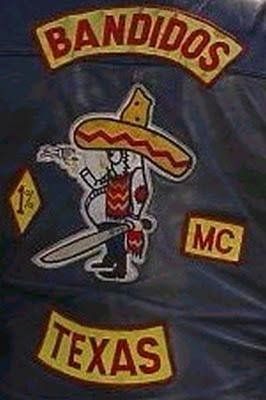
The Bandidos Motorcycle Club (Bandidos), also known as the Bandido Nation, is a "one-percenter" motorcycle gang with a membership of 2,000 to 2,500 persons in the U.S. and in 13 other countries. The Bandidos constitute a growing criminal threat to the U.S. Law enforcement authorities estimate that the Bandidos are one of the two largest OMGs operating in the U.S., with approximately 900 members belonging to 93 chapters. The Bandidos are involved in transporting and distributing cocaine and marijuana and are involved in the production, transportation and distribution of methamphetamine. The Bandidos are most active in the Pacific, Southeastern, Southwestern and the West Central regions of the U.S. The Bandidos are expanding in each of these regions by forming additional chapters and allowing members of supporting clubs, known as “puppet” or “duck” club members who have sworn allegiance to another club but who support and do the “dirty work” of a mother club–to form new or join existing Bandidos chapters.
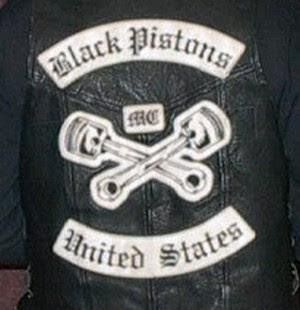
The Black Pistons Motorcycle Club (Black Pistons) is the official support club for the Outlaws Motorcycle Club (Outlaws). Established in 2002 with the backing of the Outlaws, the Black Pistons have expanded rapidly throughout the U.S., Canada and Europe. The Black Pistons have an estimated 70 domestic chapters in 20 states and an unknown number of foreign chapters in Belgium, Canada, Germany, Great Britain, Norway and Poland. The exact number of Black Pistons members is unknown but the figure is estimated to be more than 200 in the U.S. The Outlaws use the Black Pistons chapters as a recruitment source for prospective Outlaws members. The Outlaws also use the Black Pistons chapters to conduct criminal activity, especially for the transportation and distribution of drugs. Members of the Black Pistons are also known to engage in assault, extortion, fraud, intimidation and theft. Black Pistons MC Established: 2002 in Germany Years active: 2002-present Territory: U.S., Canada, Belgium, Canada, Germany, Great Britain, Norway and Poland Ethnicity: Predominantly white Membership: Unknown (an estimated 200+ in the U.S) Criminal activities: Drug dealing, assault, extortion, fraud, intimidation, and theft Allies: Outlaws, Bandidos, and Mongols Rivals: Hells Angels, Highwaymen, Pagans, Sons of Silence
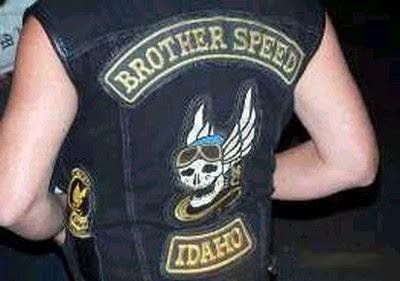
The Brother Speed Motorcycle Club is a "one-percenter" motorcycle gang that was formed in Boise, Idaho in 1969, but now has its mother chapter in Portland, Oregon. Brother Speed was established by a group of high school friends who rode motorcycles together. The friends noticed an increase in motorcycles in the area and decided to run a newspaper ad looking for anyone interested in riding together and starting a motorcycle club. A meeting was organized with approximately 20 people attending the first meeting. A few weeks after the first meeting, the group came up with the name, "Brother Speed". The club's insignia is a winged skull with sunglasses and its "colors" are black and gold. There are around 150 Brother Speed members and there are eight chapters spread across Oregon, Idaho, Washington and Utah. It is one of the "big five" motorcycle clubs in Oregon, alongside the Vagos, Free Souls, Gypsy Jokers and the Outsiders. Members must be male, at least 21 years of age and own an American-made motorcycle. Criminal activities On October 21, 2008, a Brother Speed member was charged with concealing a dangerous weapon after his car was pulled over by police in Eugene, Oregon. Police found a box of ammunition and two hand guns in the car. An Outsiders member and a Gypsy Joker were also riding in the vehicle at the time. Brother Speed MC Established: May 1969 in Boise, Idaho, United States Years active: 1969-present Territory: Northwestern United States Ethnicity: White Membership: 150 full-patch members Criminal activities: Drug trafficking, arms dealing, extortion and money laundering Allies: Free Souls, Gypsy Jokers and Outsiders Rivals: Mongols and Vagos
READY TO GET YOUR CERTIFICATION?
Are you ready to begin your journey to becoming nationally certified as a gang specialist from our accredited program. If so, click on the button below.
Hurry before prices go back up to full value. Right now we are offering a HUGE introductory discount.
Get my member only discount →

